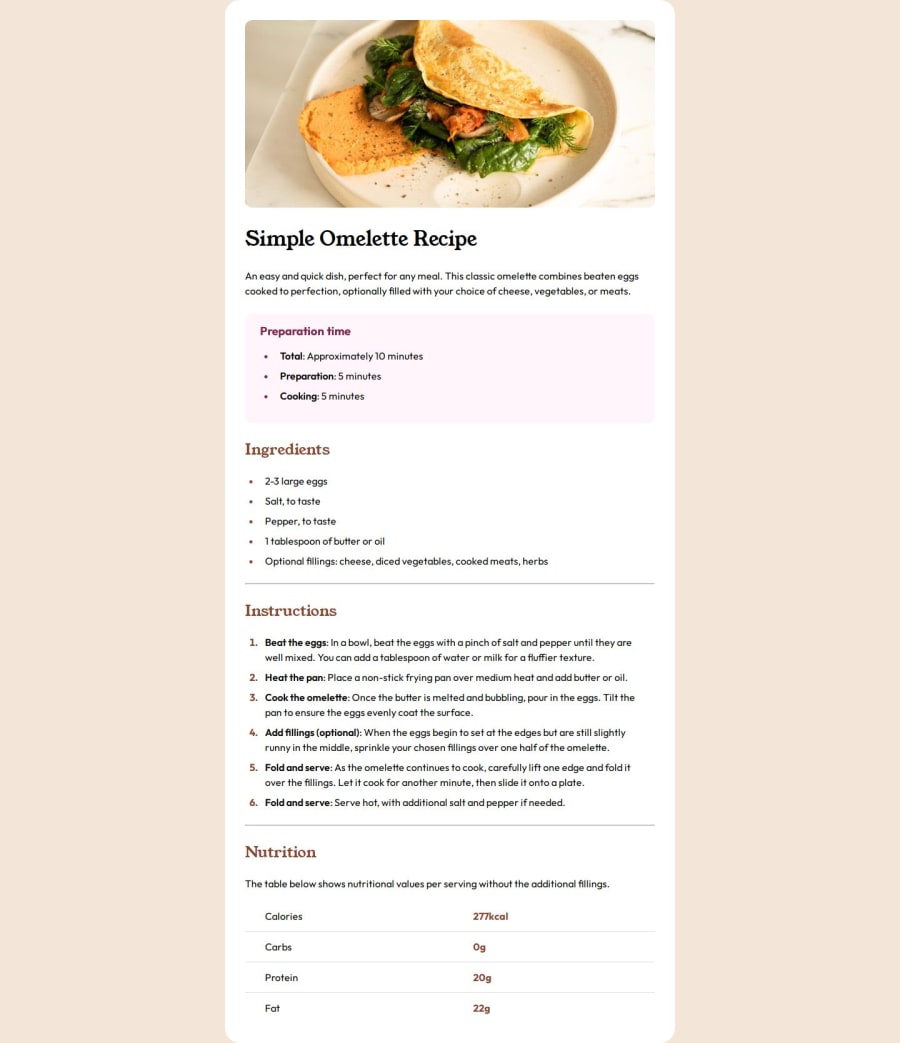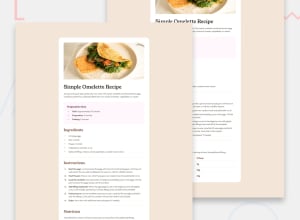
Design comparison
SolutionDesign
Solution retrospective
What are you most proud of, and what would you do differently next time?
although i did not have the figma design file but my solution was very close to the design.
What challenges did you encounter, and how did you overcome them?styling lists and table was challenging but when you comfortable with you get along easily.
Please log in to post a comment
Log in with GitHubCommunity feedback
No feedback yet. Be the first to give feedback on mostafa-hsh's solution.
Join our Discord community
Join thousands of Frontend Mentor community members taking the challenges, sharing resources, helping each other, and chatting about all things front-end!
Join our Discord
